2020 Yamaha WR250F: The Performance
Since it first arrived in 2001, the WR250F has been an enduring success story for Yamaha in Australia. Originally developed with the input of several Aussie riders, the WR250F has gone on to consistently be the biggest-selling 250cc four-stroke enduro bike in Oz for almost two decades.
But how will history judge Yamaha’s all-new, recently released 2020-model WR250F, which we finally got the chance to test last month? Is it legitimately a ‘new-generation’ model? Does it live up to the brochure’s claims that it’s lighter, faster and more agile than its predecessor? And is it actually ‘positioned’ closer to the hard-nosed, race-oriented, lightweight enduro weapons coming out of Europe?
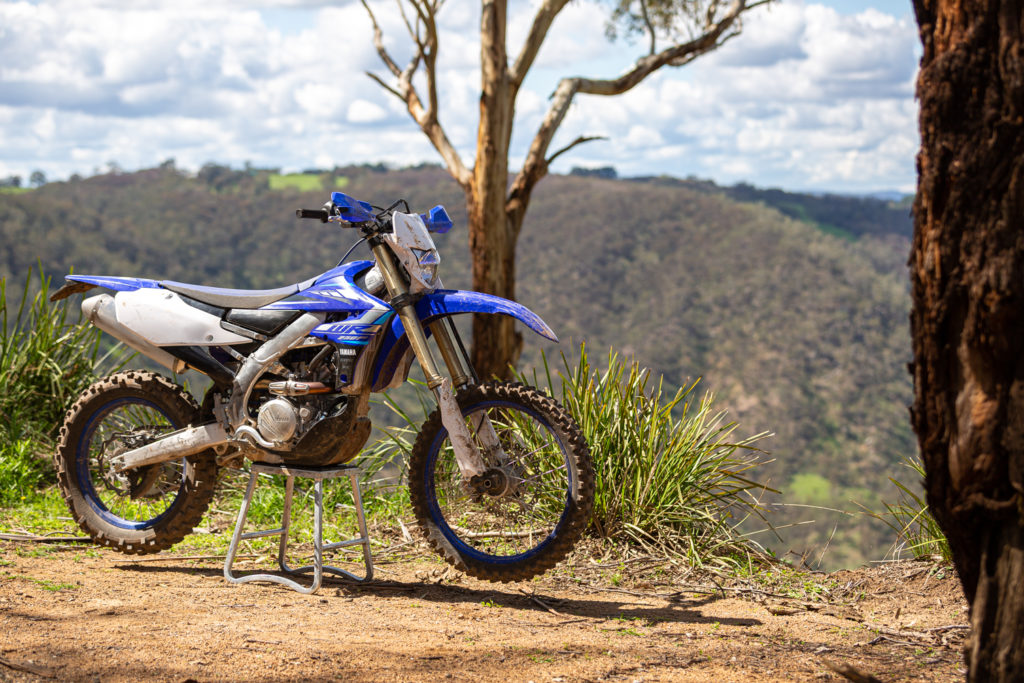
Our initial ride impression helped us answer many of those questions, but let’s look at this landmark new WR250F in more detail via a three-part series:
- Part 1 – The 2020 model in perspective;
- Part 2 – Standout performance traits; and
- Part 3 – Notable new components and design elements.
On paper, the WR250F is a very different motorcycle for 2020. But how do those sweeping changes to chassis, engine, bodywork, and suspension translate into performance gains (or losses) over its predecessor? Here’s what jumped out most to us:
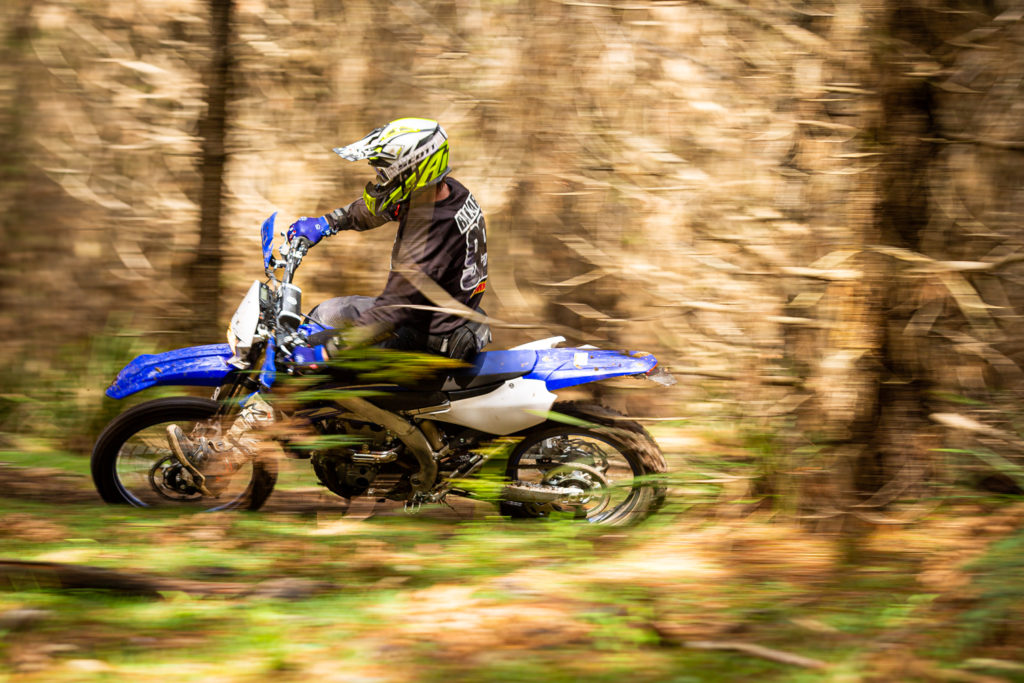
THE POWER
Thanks to a host of changes to the piston, camshafts and inlet tract, plus a more free-flowing exhaust and updated mapping, the 2020 bike pulls noticeably harder at high revs; well past where its predecessor would sign off and insist you pulled another gear. Off the bottom and through the mid-range, it’s not a lot different from the 2019 model – though it does seem to be more responsive to low-RPM throttle inputs, and less inclined to fall off the power if you get stuck in a too-tall gear on a hillclimb. Make no mistake; this is one ballsy little quarter-litre powerplant that feels like it’s packing more like 300 or 350cc, but without the added engine braking of a larger-capacity machine. It’s not as snappy or free-revving as the YZ250F, but the EFI system ensures no hesitation, no flame-outs and no flat spots in the broad, strong power delivery. It feels right at home being revved like mad around a fast and flowing grasstrack, but still has enough torque at lower revs to avoid the sort of constant gear-shifts that most 250s require to stay on the boil. And that makes it more versatile than the 2019 model (and its rivals) in stop-start terrain, where you’re more reliant on tractable torque and lag-free throttle response than outright power. That trademark air intake noise is still there, but with a less restrictive air filter and straighter intake tract for 2020, it’s noticeably quieter than the previous model.
According to Yamaha, the 2020 bike’s clutch has a lighter lever-pull and is more durable (thanks to some new heat-resistant clutch plates), but we didn’t notice either – probably because the previous model’s clutch always proved bulletproof and came with a light enough pull at the lever to use it with one finger all day.
When we get the machine back in the coming weeks as a long-term project bike, we’re also looking forward to fitting a less restrictive aftermarket slip-on muffler (probably a YZ250F canister first, and then a lighter aftermarket unit) to get a gauge on how much more mumbo and response we can extract from this incredible little donk.
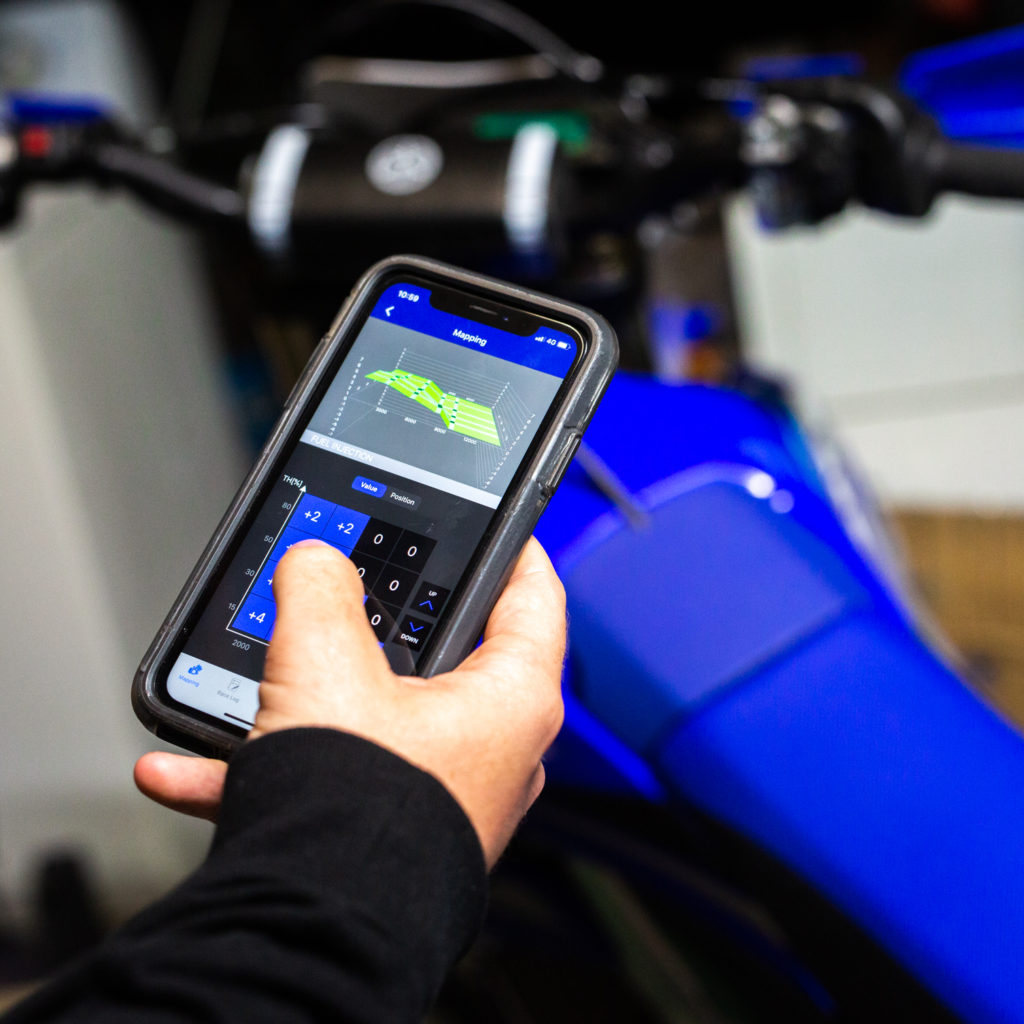
THE TUNABILITY
With any small-bore bike, having as much grunt and throttle response as you can get is always a good thing, right? Sure. But we also found that being able to alter the power delivery on the fly via the 2020 WR250F’s new bar-mounted engine map switch (the blue button) was really useful. Even though being able to ‘dull’ the power delivery is generally considered more useful for larger-capacity machines, a few of our test riders actually preferred Map #2 (a softer, ‘traction’ version of the primary Map #1) for general trailriding and technical hillclimbs because it gave them smoother, more tractable, easier-to-use power.
And there’s little doubt that Yamaha has got the jump on their competition with their free downloadable Power Tuner app. Aside from the convenience of being able to quickly and easily change the bike’s power delivery with your smartphone (and even exchange maps with mates), the app comes with a bunch of other functions that help you keep a record of maintenance schedules and/or log the settings you’ve found work best for certain terrain or tracks.
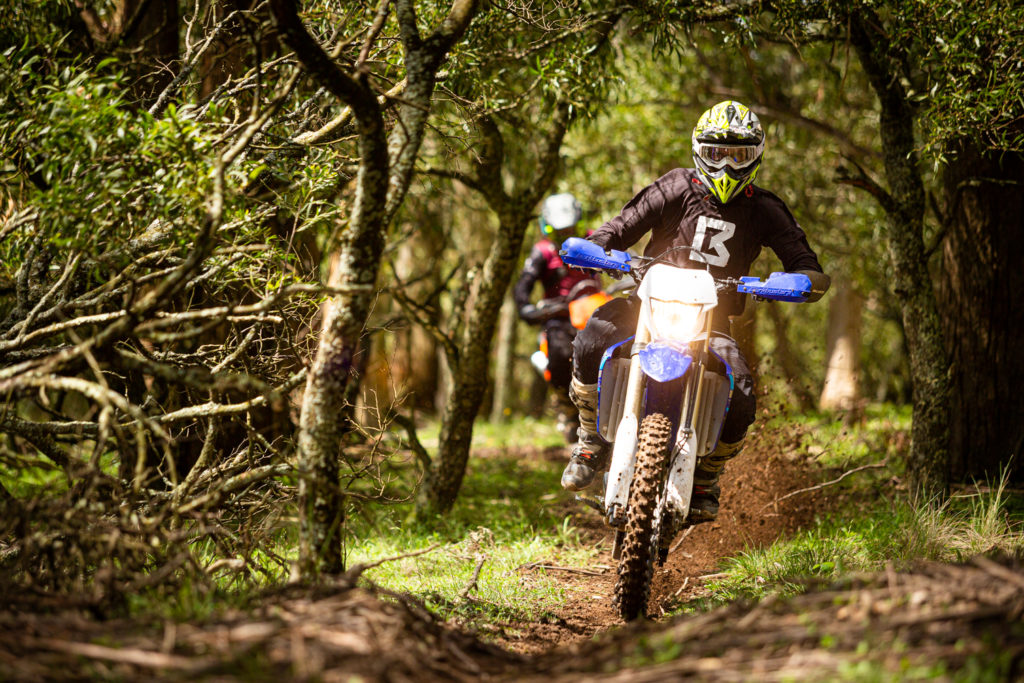
THE HANDLING
Ever since the 2015 model’s arrival, the WR250F’s standout feature has been its ability to turn quickly, but remain stable and planted at high speeds. Which is probably why there have only been subtle tweaks to its Kayaba fork and shock settings in the five years since. As with its predecessors, faster and/or heavier guys will find the limits of the 2020 bike’s fork before the shock, but for a greater majority of riders, the suspension package will be fantastically plush and progressive, and that creates a well-balanced chassis and predictable ride over all sorts of obstacles. Whether you throw the bike into a gnarly rock garden at speed, land off an erosion mound into a series of jagged ruts, or whack a loose rock midway though a corner with the bike cranked over – in other words, the sort of surprises likely to put you on your arse – the WR250F has an uncanny ability to resist being thrown off-line. We actually found the chassis responded well to sliding the fork legs down by 6mm so they were flush with the fork caps. That set-up gave the chassis more composure on bumpy downhill braking, without adversely affecting its steering accuracy on flat turns or tight terrain.
All that said, the most noticeable forward step this 2020 model has taken in the handling department is its agility and even lower tip-weight. The combination of the narrower and more compact ergos and mass centralisation (achieved via the design of the new fuel tank, relocated starter motor, etcetera), makes it feel noticeably more nimble if you want to flick from side to side on singletrack, change lines mid-turn, and throw around in the air. You can ride the thing all day without it wearing you out. Sure, Yamaha isn’t the only manufacturer to talk about mass centralisation and its handling benefits. But the WR250F is still the world’s only 250cc enduro bike to use a reverse-mounted, rear-slanting cylinder head, along with a centrally mounted fuel tank and a header pipe that encircles the engine. And there’s no doubt that plays a pivotal role in the model’s class-leading agility.
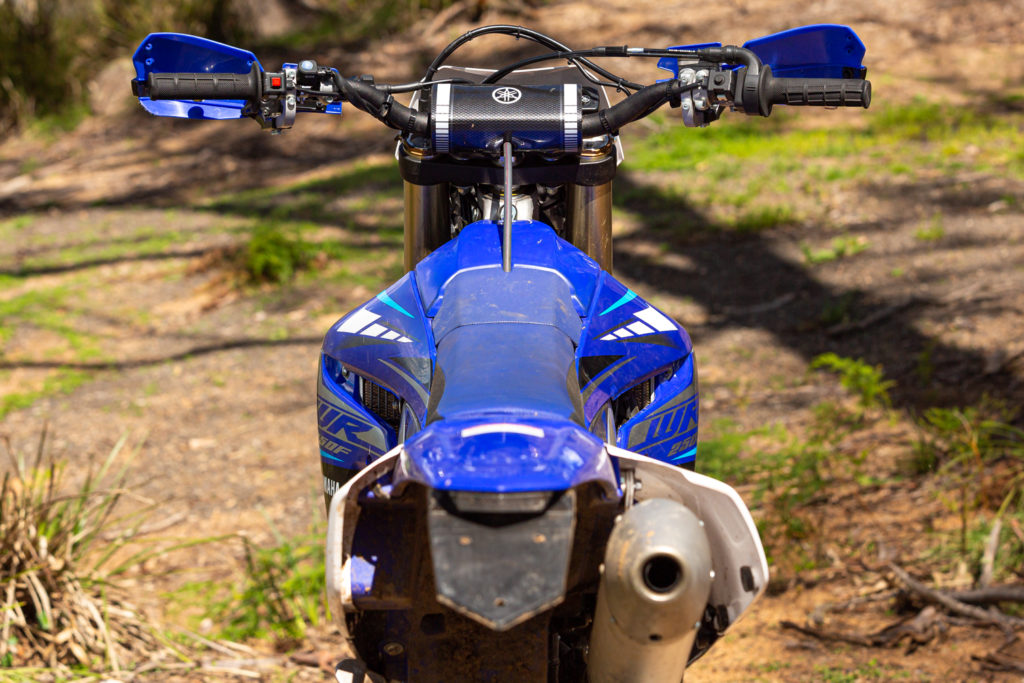
THE ERGONOMICS
When there are sweeping changes to a new model’s engine and chassis, it can be easy to overlook the importance of updates to bodywork and ergos and the impact they have on the bike’s performance and feel. Sure, new plastics and a different seat and tank design doesn’t generate horsepower, but with the 2020 WR50F, they sure make a big difference to the way you’re able to ride the machine. In addition to the 2020 bike feeling narrower, lighter and more flickable between your legs, the significantly updated bodywork gives your boots a flatter and more streamlined surface to grab, and noticeably more room between the bars and radiator shrouds for your inside leg when you’re cranked over in a rut.
With the 2020 bike’s seat being lower and firmer, moving around in the cockpit (especially backwards for downhill braking) is easier, and shorter riders will appreciate the extra control this cockpit gives them in muddy or technical terrain. That said, if you’re 5’10” plus, fitting a taller GYTR seat is likely to create a more comfortable cockpit. As we found with the 2019 WR450F (which came with the same seat and bodywork mods now adapted by the 2020 WR250F), the taller seat not only make your legs less cramped, it also puts you in a more forward-biased, aggressive riding position on the bike, and makes it easier to go from being seated to the standing position.
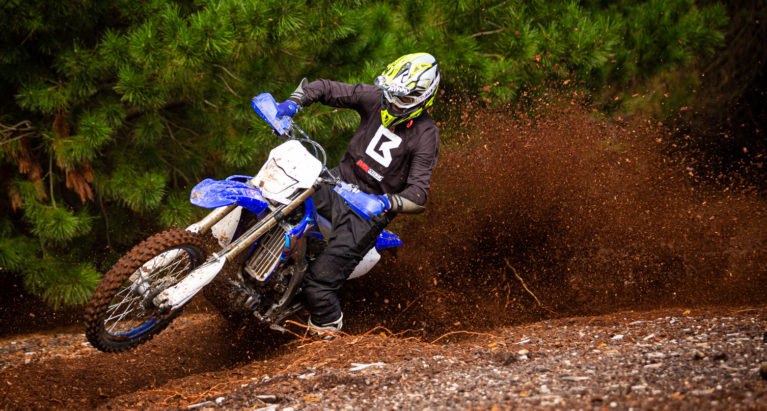
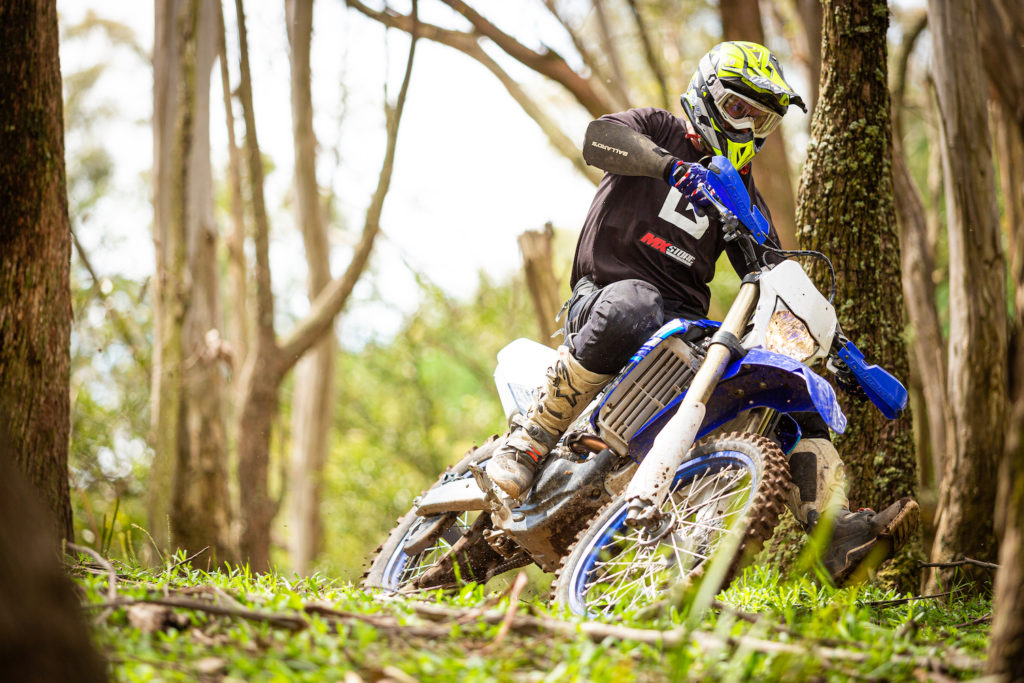
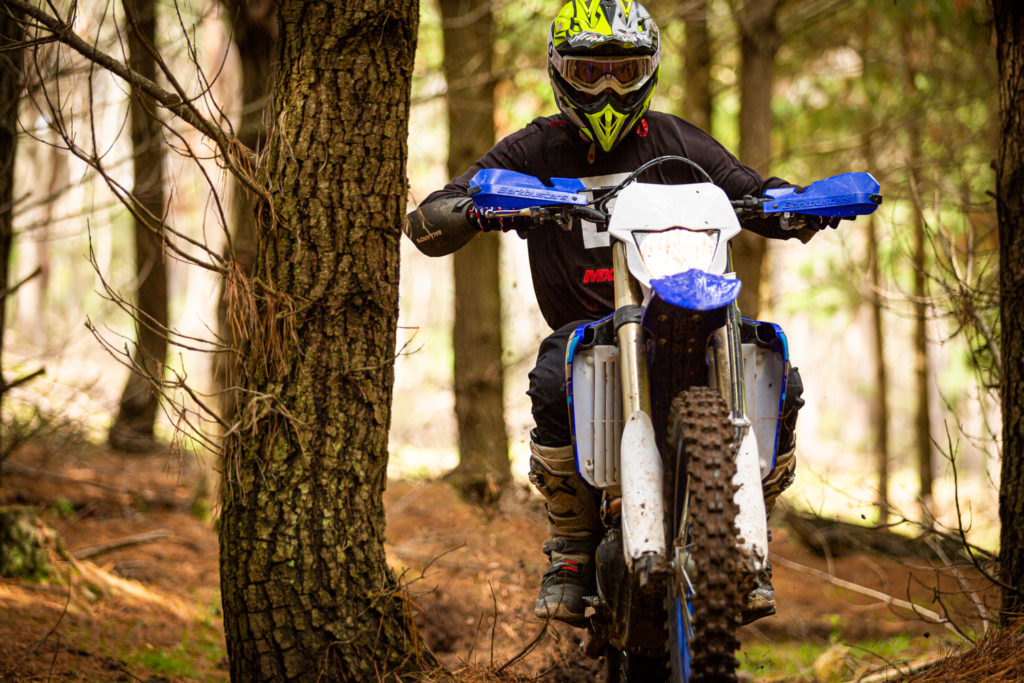
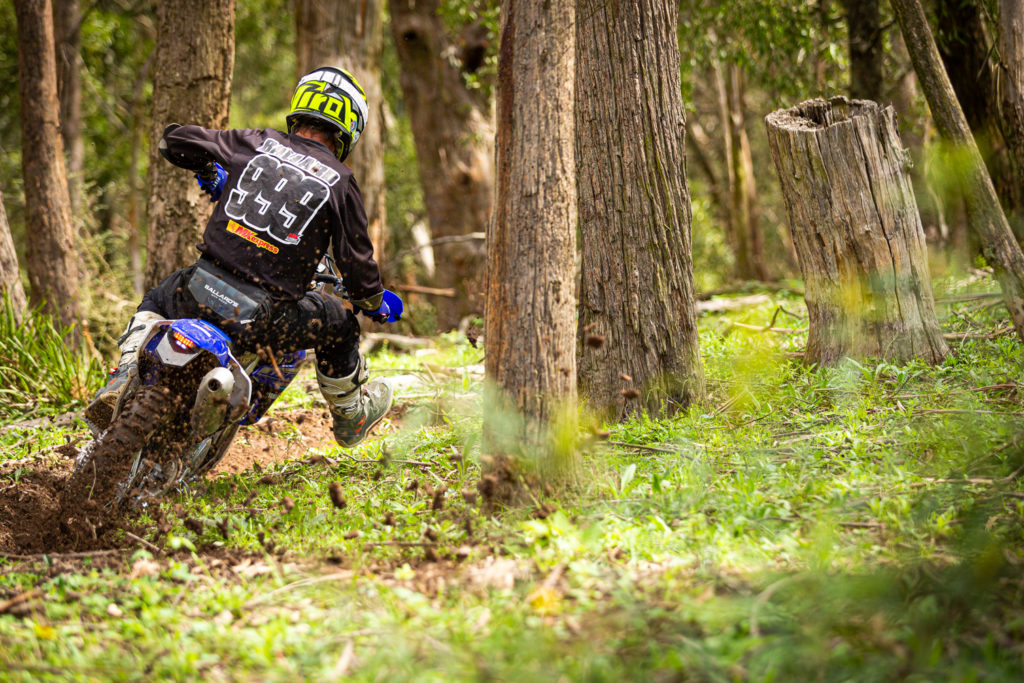








Be the first to comment...